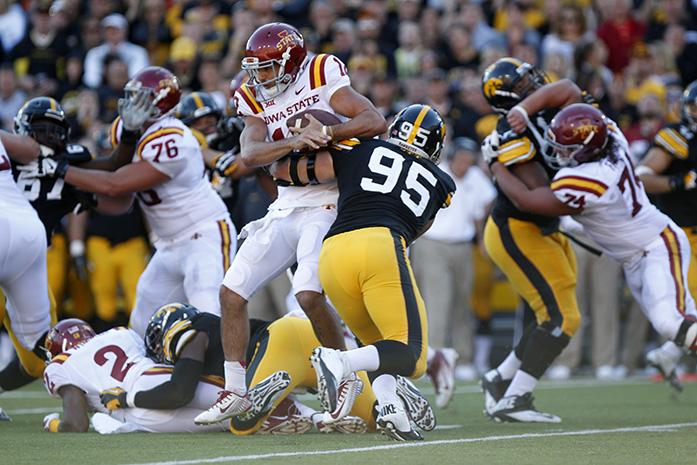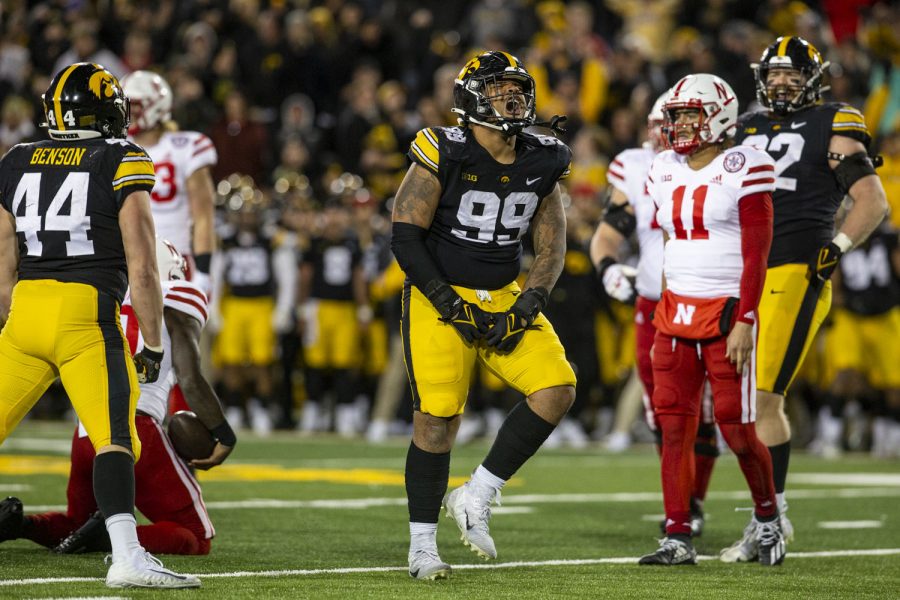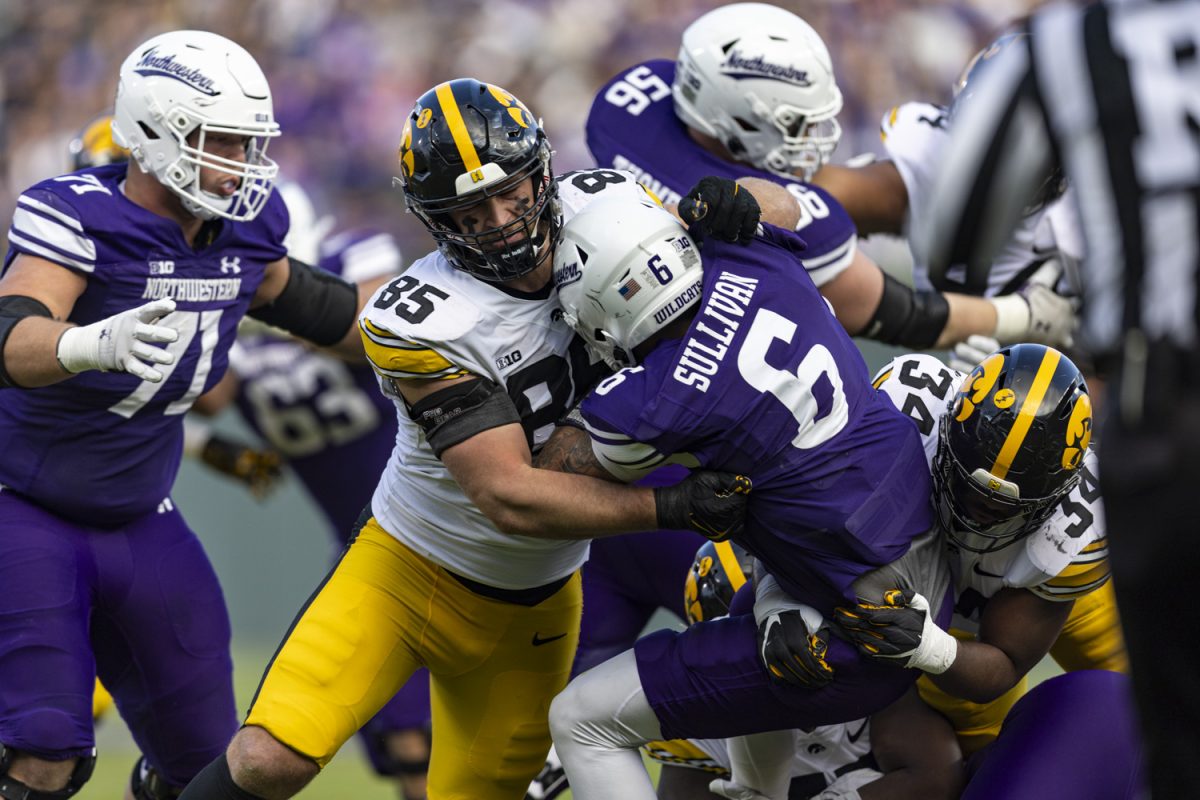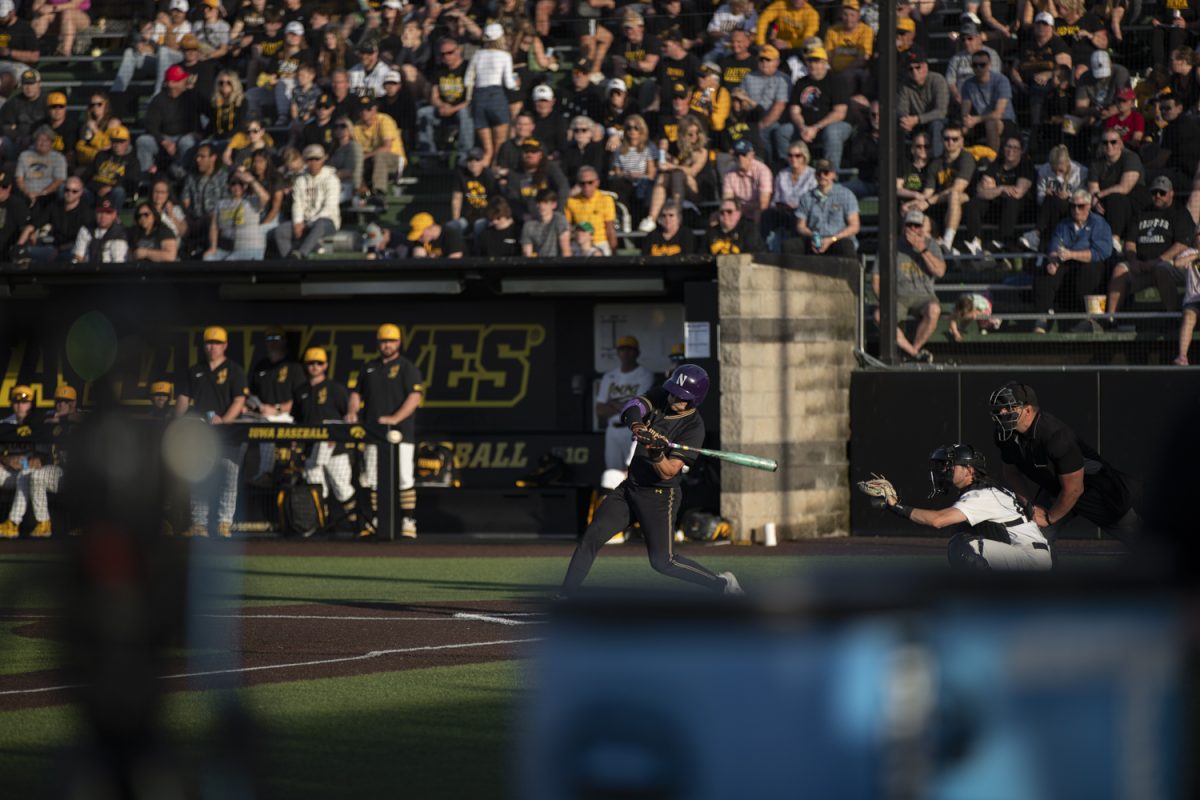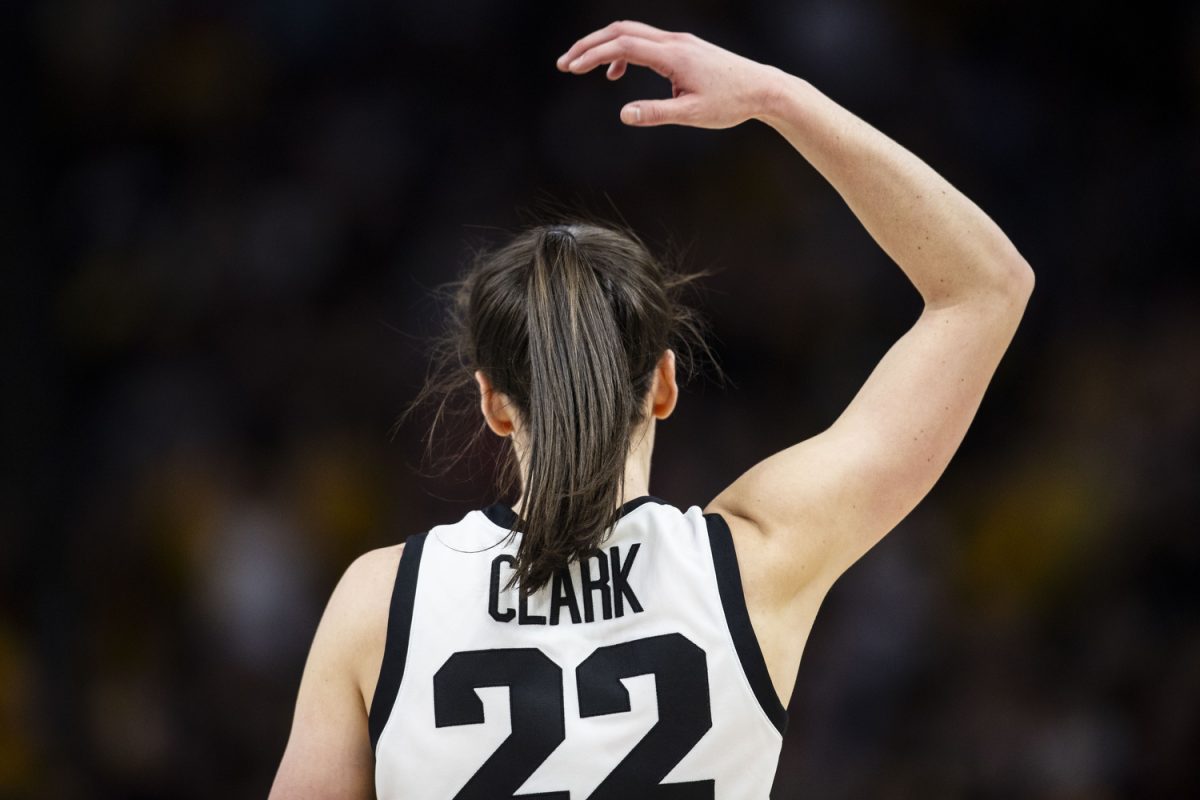By Jordan Hansen | [email protected]
As the clock continues to tick on the NCAA’s decision on whether Drew Ott will be granted a medical redshirt and another year of eligibility, the frustration has to be mounting.
Iowa defensive line coach Reese Morgan gave a bit of an update during Wednesday’s media availability.
“I feel bad for him, it’s been denied several times, he has an appeal in again,” Morgan said. “The process seems to be frustrating because no one from the NCAA has talked to anyone in this building about it. Which seems to be unusual.”
Ott has been writing his appeals and the compliance staff has apparently been helping him as much as they can, but he’s in a tough spot. He’s being treated as a graduate, which means he can work with the medical staff and strength and conditioning staff, but not much else.
Iowa head coach Kirk Ferentz didn’t criticize the NCAA when a reporter asked him if something was wrong with the process at a March 22 press conference, opting for a more general answer.
“I’m not going to make judgment on that,” he said. “It’s just … it’s really hard to put a finger on. It’s what it is. We’ll bide our time. Everybody’s working hard on it.”
Ferentz also said Ott is making good progress in his recovery.
Again, however, the length of the process has been grating. NCAA guidelines say that athletes who request a medical-hardship waiver for can’t have played in 30 percent of their team’s games in the season they’re trying to get back.
Ott played in 43 percent of Iowa’s games, but there’s something that separates his case from others. He dislocated his elbow early in the season against Iowa State — the Hawkeyes’ second game — and the Hawks have a strong case in regards to his limited status throughout the rest of the season.
“For him the toughest part is not knowing,” Ferentz said. “It’s like anything in life; if you don’t know where you’re going and what the future is, that’s always a tough thing to deal with.
“But it doesn’t affect his rehab. He’s doing a great job and working hard.”
Ott certainly isn’t the only player to ever apply for a medical redshirt, but the glacial pace of the process is surprising when compared with other instances.
Former Oklahoma linebacker Corey Nelson was in a situation very similar to Ott’s at the end of the 2013-14 season. Both played as true freshmen, never using their redshirt years, and Nelson’s senior season was also cut short with an injury. Nelson tore a pectoral muscle in the fifth game of his senior season, while Ott suffered an ACL tear in the sixth game of his season.
Soon after the injury, Oklahoma applied for a medical-hardship waiver. The NCAA denied it, however, because Nelson played in five games his senior season.
Obviously, there are exceptions to the rule, but here’s the kicker — Nelson was told he wasn’t going to get the waiver in December of 2013.
Similarly, former Michigan defensive end and linebacker Mario Ojemuda played in the first five games of the 2015-16 season, then was injured against Maryland and didn’t play the remainder of the season. Ojemuda was in just his fourth year on campus (he also didn’t redshirt), but because he was over the 30 percent line, the NCAA didn’t allow him the hardship waiver.
Ojemuda found out about the decision in December.
Ott had to wait until the end of February to even hear from the Big Ten, and he’s had to spend all of March doing nothing more than waiting. In the meantime, he hasn’t been able to sign with an agent and couldn’t accept gifts at the NFL combine.
Signing with an agent is far more important to his future than a gift bag. While Ott did get a chance to go to the NFL combine, he seems to be still in the rehabilitation stage of his recovery.
He didn’t do any workouts at the combine or Iowa’s pro day, which means teams only have his game and potentially practice film to watch. If Ott had an agent, it would likely be her or his responsibility to make inroads with professional teams.
Now, that falls on Ott and his family. To complicate matters further, until NFL teams know whether he can be drafted, they won’t be able to firmly put him on their draft boards.
The amount of time for the process hasn’t put him in the best situation. After all, early registration for classes starts on April 11.
Updated 2:01 p.m.
Follow @JordyHansen for Iowa football news, updates, and analysis.




